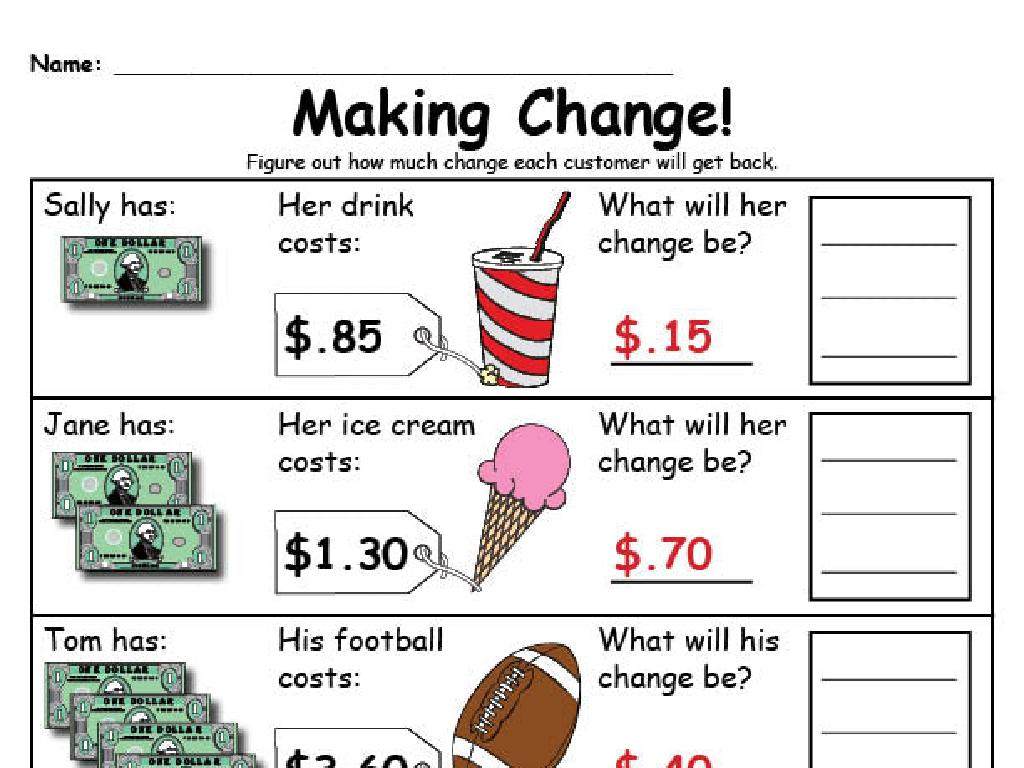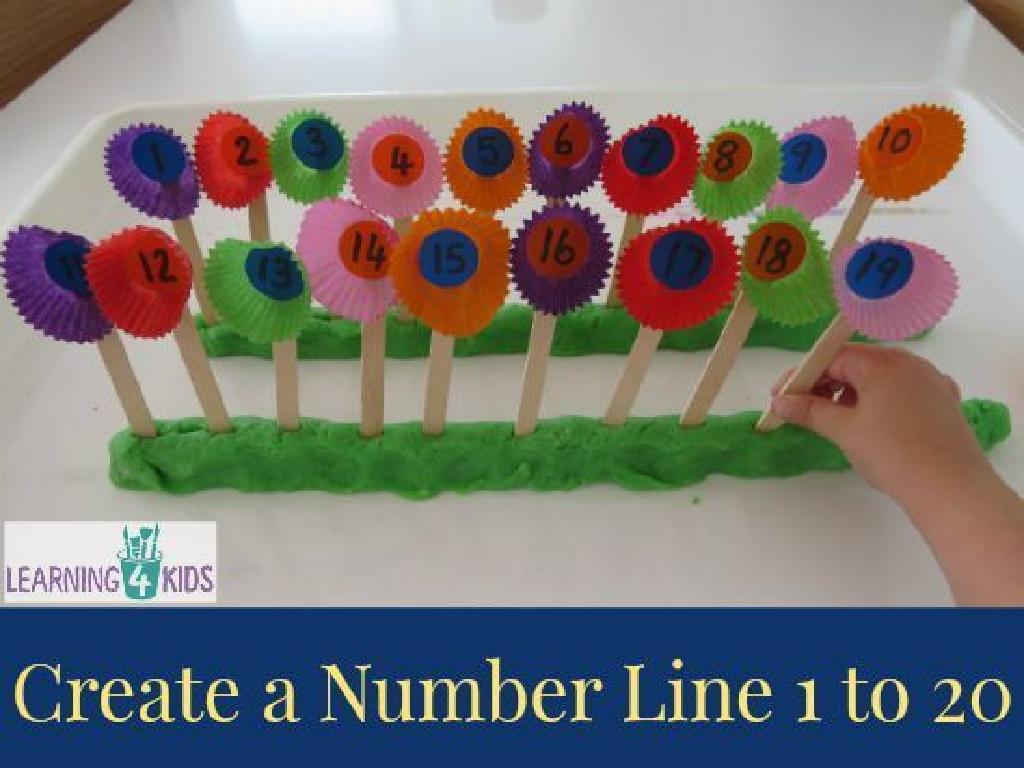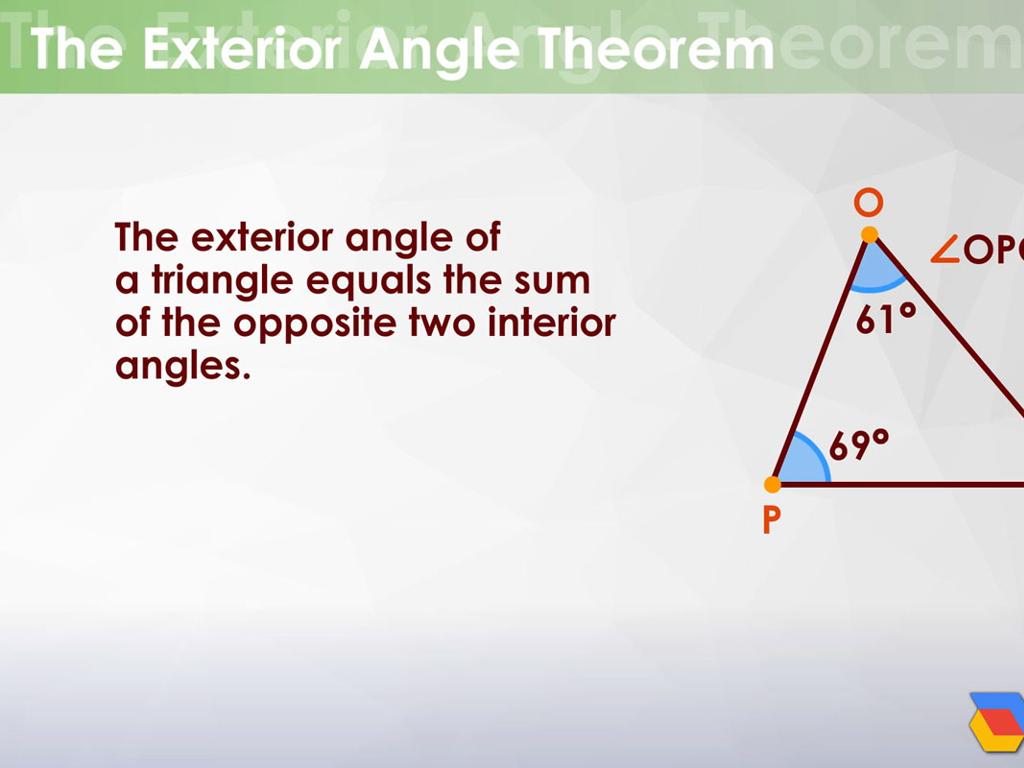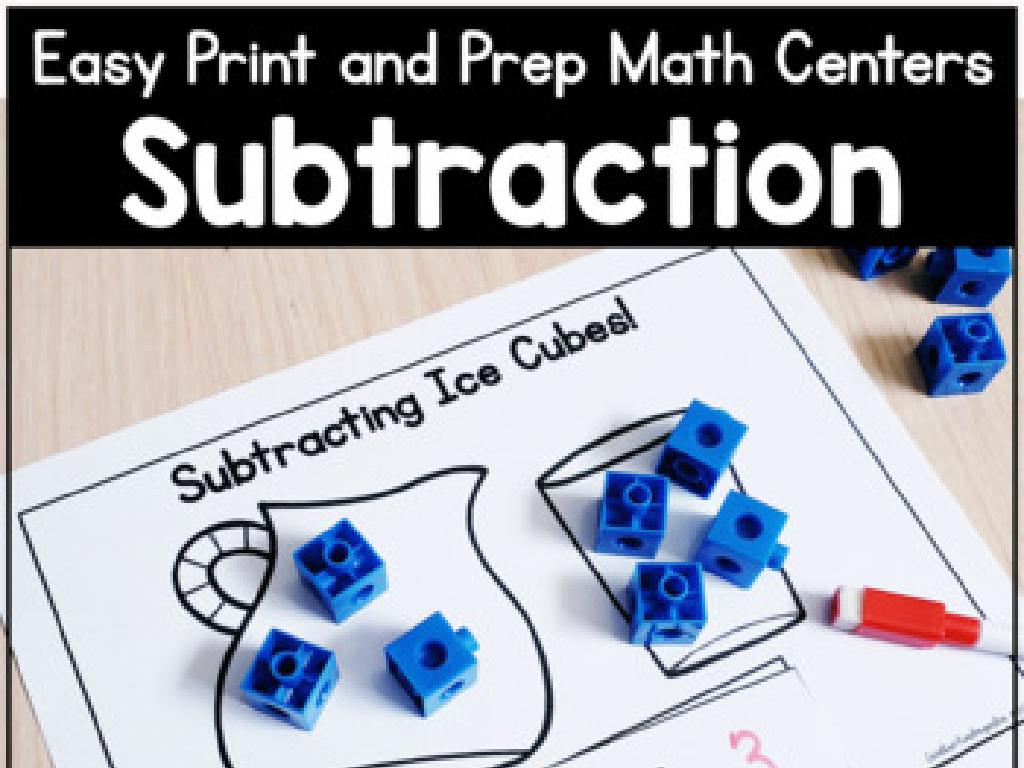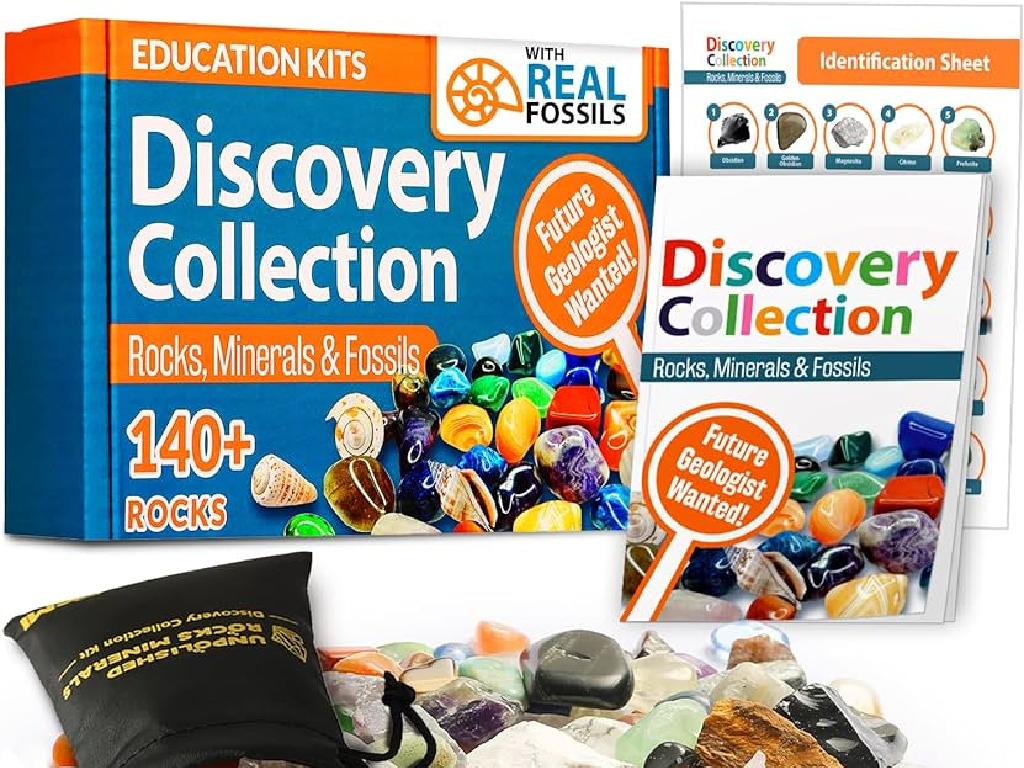Choose The Lowercase Letter That Matches The Consonant Sound: Review
Subject: Language arts
Grade: Pre-k
Topic: Letter-Sound Associations: Lowercase
Please LOG IN to download the presentation. Access is available to registered users only.
View More Content
Welcome to Letter Sounds!
– Fun with sounds and letters
– Match sounds to lowercase letters
– Hear a sound? Which letter makes it? ‘b’ as in ‘ball’!
– Practice makes perfect
– We’ll practice with different sounds and letters
– Ready to be letter-sound experts?
|
This slide is designed to introduce Pre-k students to the concept of matching consonant sounds to their corresponding lowercase letters. Start the class with enthusiasm about playing with sounds and letters. Explain that each sound is made by a specific letter and today’s goal is to learn how to recognize and match them. Use examples like ‘b’ for the sound at the beginning of ‘ball’ to illustrate the point. Engage the students in practice activities where they listen to a sound and then choose the correct lowercase letter. Encourage repetition to help them become confident in their ability to identify letter-sound associations. By the end of the lesson, aim for the students to feel like ‘letter-sound experts’.
Consonant Sounds Exploration
– Consonants vs. vowels
– Consonants are letters like b, c, d, not a, e, i, o, u.
– How we make consonant sounds
– We block or limit air with our tongue, lips, or teeth.
– Practice consonant sounds
– We’ll say sounds for letters like ‘t’ as in ‘top’ and ‘s’ as in ‘sun’.
|
This slide introduces Pre-K students to the concept of consonant sounds. Begin by explaining the difference between consonants and vowels, emphasizing that vowels are a, e, i, o, u, and all other letters are consonants. Demonstrate how consonant sounds are made using different parts of the mouth to block or limit airflow. Engage the students in practicing these sounds by saying them out loud together. Use visual aids like pictures of objects that start with the consonant sounds to help them associate the sound with the letter. For example, show a picture of a ‘top’ when practicing the ‘t’ sound or a ‘sun’ for the ‘s’ sound. This interactive approach will help them remember the sounds associated with each letter.
Meet the Lowercase Letters
– Lowercase letters: small alphabet forms
– Used often in writing
– Spot the difference: ‘A’ vs ‘a’
– ‘A’ is uppercase, ‘a’ is lowercase. See how they look different?
– Match sounds to lowercase letters
– Hear a sound? Which small letter makes that sound?
|
This slide introduces Pre-K students to the concept of lowercase letters, emphasizing their frequent use in writing. Begin by showing the visual difference between uppercase and lowercase letters using ‘A’ and ‘a’ as an example. Explain that while they look different, they represent the same sound. Engage the students by asking them to identify lowercase letters that match specific consonant sounds played during the lesson. Activities can include letter-sound matching games, tracing lowercase letters, and identifying lowercase letters in their names or common words.
Matching Sounds to Letters
– Each letter has a unique sound
– Match sounds to the right letter
– Example: /b/ sound matches ‘b’
– Like /b/ is for ‘ball’, /m/ is for ‘moon’
– Practice with different sounds
– Try matching /t/ with ‘top’, /s/ with ‘sun’
|
This slide introduces the concept of letter-sound associations to Pre-K students. It’s crucial to emphasize that every letter in the alphabet has a distinct sound. Encourage students to listen carefully to the beginning sounds of words and match them to the correct lowercase letter. Use familiar objects like a ball to illustrate the /b/ sound. During the class, practice this concept by showing them objects or pictures and asking them to choose the lowercase letter that matches the initial consonant sound. For example, show a picture of a top and ask them to find the ‘t’. This activity will help reinforce their understanding of the relationship between sounds and letters.
Let’s Practice Together!
– Listen to the consonant sound
– Find the matching lowercase letter
– Look at your letters and think which one matches the sound
– Choose the correct letter
– Is it ‘b’ as in ‘ball’ or ‘d’ as in ‘dog’?
– Get ready to show your skills!
|
This slide is for an interactive class activity where the teacher will make a consonant sound and the students will identify the corresponding lowercase letter. Before starting, ensure that the students are familiar with all the consonant sounds. Make each sound clearly and give the students time to think and choose the right letter. If possible, have letter cards available for them to hold up as their answer. Praise correct answers and gently correct any mistakes, reinforcing the correct sound-letter association. This activity helps to solidify the students’ understanding of letter-sound associations, which is crucial for their reading development.
Activity Time: Sound Match Game
– Cards with letters and pictures
– Match starting sounds
– Find a picture that starts with the same sound as the letter on your card
– Collaborate with classmates
– Complete the matching game
|
This activity is designed to help Pre-k students reinforce their understanding of letter-sound associations, specifically focusing on consonant sounds. Provide students with a set of cards, each displaying a lowercase letter and a variety of pictures. Instruct them to identify the picture that begins with the same sound as the letter shown. Encourage collaboration by having students work in small groups to find all the matches. This interactive game not only aids in phonemic awareness but also promotes teamwork. Possible variations of the activity could include timed challenges, mixing up cards for repeated play, or having students draw their own pictures to match with letters.
Matching Sounds to Letters
– Sounds match with letters
– Each sound pairs with a letter, like ‘s’ for ‘snake’
– Lowercase letters: small friends
– Lowercase letters are just like their uppercase partners but smaller
– Reading & writing with sounds
– Knowing sounds helps us read and write words!
|
This slide is a review session aimed at reinforcing the association between sounds and their corresponding lowercase letters. Emphasize the fun aspect of learning to match sounds with letters. Explain that lowercase letters are simply the smaller versions of uppercase letters and they work together to form words. Encourage the children by acknowledging their progress towards reading and writing. For the activity, consider having students match sounds to letters with flashcards, play a game where they identify objects around the classroom that start with certain sounds, or have them practice writing letters in sand or with finger paints.
Class Activity: Letter Sound Bingo
– Receive your Bingo card with letters
– Listen to the consonant sounds I make
– Sounds like ‘b’, ‘t’, ‘m’, ‘s’
– Cover the matching lowercase letter
– Shout ‘Bingo!’ for a full row
– We’ll all check the winning card together
|
This interactive activity is designed to help Pre-k students review and reinforce their understanding of the association between lowercase letters and their corresponding consonant sounds. Distribute the Bingo cards, ensuring each student has one. As you make a consonant sound, guide the students to listen carefully and find the lowercase letter on their card that matches the sound. Encourage them to cover the letter, using a marker or a small object. When a student covers a full row, they should shout ‘Bingo!’ and wait for the teacher to check their card. This activity promotes active listening, letter-sound recognition, and provides a fun way to assess students’ grasp of the concept. Prepare a small reward for the winners to motivate participation.

